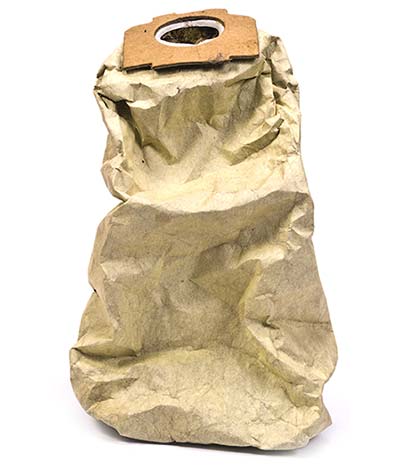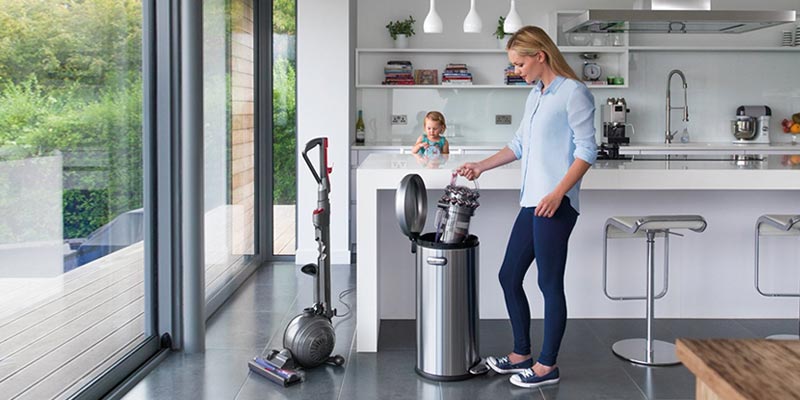How a Bagless Vacuum Cleaner Will Benefit You
The idea of centrifugal separation vacuuming has been around since at least the 20’s, but the most recent trend toward this technology, and the bagless vacuum, was the making of James Dyson who introduced his first unit in 1979. They gained in popularity especially in the 1990’s and soon other big name vacuum manufacturers, such as Hoover and Shark, adopted examples of the technology.
What makes a bagless vacuum a good decision?
Most bagless vacuums have much the same options their bagged counterparts including; motorized brushes, all the extensions and add-ons and running lights, but they have some standout characteristics. Below, we have taken a closer look at five benefits that bagless vacuum cleaners have over their bagged counterparts.
1. Less Loss of Suction
You know those times your vacuuming along, really putting a dent in the house cleaning, and you feel that slow dread rising as you realize dirt particles aren’t staying in the vacuum. A kernel of popcorn is sucked away as you pass over it only to be spat back out a moment later. You pull the hose, placing your hand against the end and sure enough, the satisfying slurp and high whine of good suction is not to be found.

Does the bag need to be changed? You expose the vacuums guts and tentatively poke at its stomach. It seems only half full. But something has stolen suction, so you pull the bag off the fitting, see nothing, replace it on the post, close it up and start the vacuum again. And suction is back, but still not quite what it is with a brand new bag.
Okay, it doesn’t always happen like this, but I’m sure this has happened to you at least once. Overall bagged vacuum cleaners preform admirably, but we all know that they have a tendency to slowly lose suction as the bag fills.
Bagless vacuums lose far less suction as the dust collection cup fills and often even continue to have good suction when the cup is almost completely full. But there is also less chance of the dust cup becoming completely full; it’s transparent and you know exactly when it needs emptying.
2. Bagless Vacuums Are Environmentally-Friendly
Bagless vacuums are better for the environment. Every bag takes resources to make, takes resources to transport to the store where you will purchase it. Every bag you use and throw away goes into a landfill. It may seem a small thing but when you’re trying to live greener the small things add up.
With a bagless vacuum you are not taking part in the using of those resources and the only thing you are throwing away is the dust and other debris sucked up off the floor. You are not adding to it by throwing away the container too.
3. Satisfaction of Seeing Your Work
There is something very satisfying about being able to look through the transparent plastic canister and see all the dirt and grime you’ve gotten off the floor. Like a salesman working hard to sell the vacuum, you may find yourself running to someone else in the house just to show how much you’ve picked up, how messy the house really was, and pointing out, yes it actually really did need to be cleaned.
Bagless vacuums also make it tons easier to find that jack of Jimmy’s or little Mary’s doll barrette, sucked away in a moment of poor floor scrutiny. There’s no having to cut into a bag to get at lost items, just dump the canister carefully in a trashcan lid and easily fish out the once missing treasures.
4. Easy To Empty
Bagless canisters are also very easy to empty. Usually only requiring a release from the vacuum body and a snap of the bottom or top canister lid. You want to do this over an outside trashcan and as close to the bottom as possible, because all the dust can easily turn into a big cloud if some care is not taken.
This also brings up the point of allergies. Bad allergies may be a good reason to stick with bagged vacuums. But many bagless vacuums now have HEPA filtration built right in and if done carefully and with a little thought these canisters can be emptied with minimal allergic reactions; and, going back to the green point, a single reusable allergy face mask worn when emptying the canister is greener then throwing bag after bag away.
After emptying the canister, you also have a unique opportunity to clean the inside of the bin and perhaps wash/replace the filters. Taking the extra couple of minutes to clean your machine will go along way in keeping it in top working condition.
5. No Fussing with Bags
I know I’ve found myself in the situation where I’m in a cleaning mood. I start vacuuming and realize the bag needs to be changed, so I start searching… where did I put those, in closets and drawers until finally I conclude that I have no more bags, so, an extra trip to the store to get bags. It’s a hassle, at least for those lacking in their organization. With a bagless vacuum cleaner this is just not a worry. When you’re ready to clean, the vacuum is ready to clean.
There is some maintenance with bagless vacuums. The filters need to be cleaned periodically to maintain best performance. Most are easily washable. They will also need to be replaced once-in-awhile, but far less often than you would be buying bags (again the greener part).
There’s also a reason most handheld, stick, and robot vacuum cleaners are bagless, this type of technology is more easily molded into these less conventional vacuum configurations. Not to mention more favorable by consumers.
Conclusion
Regardless of whether purchasing a bagged or bagless vacuum cleaner remember to do some research on the pros and cons of each type. It is important to purchase a well-designed and easy-to-use vacuum. After all, if you don’t like to use the vacuum it makes cleaning that much more of a chore. Bagless vacuums are not inherently better than vacuums that require bags, but they do offer a greener, more hassle-free cleaning experience for those that would like the option.
